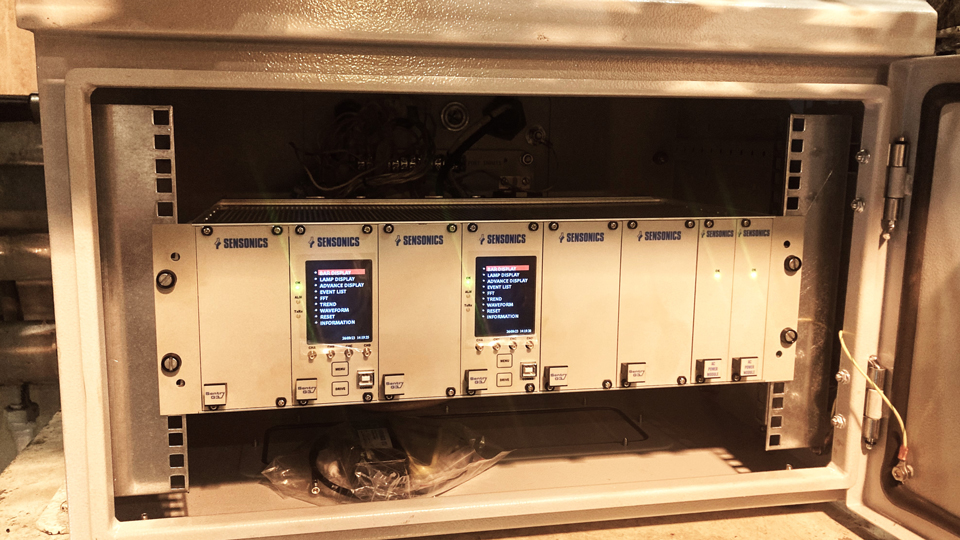Effective monitoring of turbines is a critical requirement across a wide range of power generation applications, helping to ensure smooth running, trouble-free operation of rotating machinery, before serious faults and the consequences of downtime occur. Condition monitoring specialists SENSONICS are experts in developing highly effective monitoring systems based on over 40 years of experience. This expertise includes specialised instrumentation solutions for power turbine, pump conditioning monitoring, as well as seismic protection across a wide range of critical monitoring applications. Since its introduction over 20 years ago, the design of their market leading Sentry G3 system has been developed and enhanced in conjunction with customer’ needs resulting in a highly reliable hardware configuration with online test facilities.
A good example of an important and successful installation is their Sentry G3 system specified by the MOD / Royal Navy for a vibration monitoring application on their Type 23 Frigates HMS Richmond and HMS Somerset. This long term project began in 2014 when Rolls-Royce Marine Electrical Services contacted Sensonics because their vibration monitoring system for their Spey Gas Turbine was no longer supported by the original supplier.
As a result, the Sentry G3 machine protection system was supplied, installed and tested at The Royal Navy’s HMS Sultan Spey test house in 2015. The monitoring systems were subsequently approved and this represented important recognition of the features and efficacy of the Sentry G3 system. Each of the gas turbines has kept the existing three velocity vibration transducers, two on the GT (mounted front and rear) and one on the power turbine, which equates to 6 channels of machine protection per frigate. The resulting contract awarded involved 12 x 8 channel Sentry G3 systems for vibration monitoring of the Rolls-Royce Marine Spey Gas Turbines (2 per Frigate on the Royal Navy’s Type 23 Frigates.

Fast forward to 2024 and the Sentry G3 system has now been installed on the Royal Navy’s HMS Richmond and HMS Somerset, with plans to install the system onto HMS Portland, HMS St Albans, HMS Sutherland in the near future, along with HMS Iron Duke, depending on the ships programme.
Since its introduction the Sentry G3 system and its features have been developed and enhanced in conjunction with customers’ needs in both the conventional and nuclear power industry, resulting in a highly reliable hardware configuration with online test facilities. For example, the provision of gas turbine specific measurements such as first order vibration tracking and dynamic pressure which are both requirements recommended by gas turbine manufacturers. In addition, the speed algorithm has also been optimised to accept a wider range of speed probes and now offers a market leading sensitivity performance over a wide speed range ensuring the turbine interlocks can be integrated effectively to the G3 system over a range of operational conditions.
The new measurement algorithms can be downloaded into the common hardware module and complement the other established measurements such as broadband vibration, temperature and speed. The flexibility of the G3 system sensor interface also permits a wide range of sensor types to be utilised providing both the necessary drive power supplies and fault detection. The system offers excellent channel density with up to 24 measurement channels in a 3U x 19” racking format, while the diverse system architecture separates functions across the independent modules providing a channel reliability suitable for safety instrumented systems.
The additional features incorporated into the latest Sentry G3 system ensures more than just machine protection, it provides a set of tools to assist plant engineers to optimise the control and overspeed management of turbines and other rotating plant.
More at: https://www.sensonics.co.uk/defence












Guest blog: exploring opportunities for hydrogen combustion engines
"We wouldn't need to pillage the environment for the rare metals for batteries, magnets, or catalisers". Batteries don't use rare...